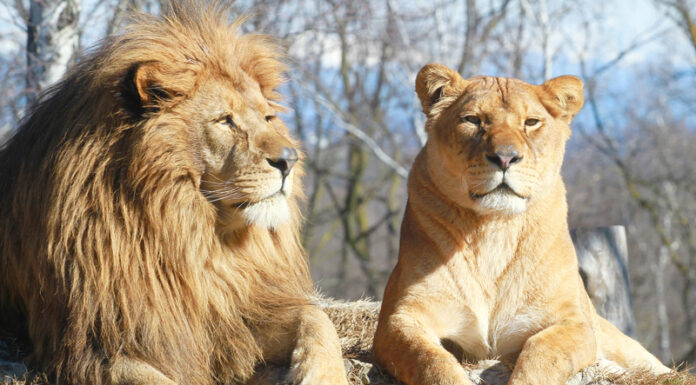Authorities in Kenya reported that a 14-year-old girl was killed by a lion that escaped from Nairobi National Park on the night of April 19, 2025. The lion entered a residential area on the outskirts of Nairobi, Kenya, after leaping over a temporary fence.
The teenager, who has not been named, was with a friend inside the home when the lion attacked and took her. Her friend quickly notified authorities, leading to a swift response from the Kenya Wildlife Service (KWS).
“KWS rangers and response teams were swiftly mobilized and traced bloodstains leading to the Mbagathi River, where the girl’s body was recovered with injuries on the lower back,” the agency said in a statement.
The incident occurred in a residential compound situated on a ranch adjacent to the southern boundary of Nairobi National Park. The park, situated approximately six miles from downtown Nairobi, is home to a diverse array of wildlife, including lions, cheetahs, leopards, buffalo, and giraffes.
In response to the incident, KWS officials have set traps and deployed search teams to capture the lion, which remains at large. The agency has also implemented additional security measures to prevent further incidents in the vicinity.
According to KWS, the attack is believed to have been caused by a “scarcity of prey in her natural range,” with no indication of victim provocation.
Nairobi National Park is fenced on three sides to prevent animals from entering the city, but its southern border remains open to allow wildlife to migrate. This arrangement supports animal migration but poses challenges in managing human-wildlife interactions.
The event is not isolated. A day prior, on Friday, a 54-year-old man was killed by an elephant in central Nyeri County, approximately 80 miles north of Nairobi. The man was reportedly grazing livestock in a forested area when attacked.
These consecutive fatal encounters underscore the persistent tensions between human settlements and wildlife in Kenya. Although lions often conflict with humans over livestock, deadly attacks on people are uncommon.
Last year, a similar event occurred when a lion took a Rottweiler dog from another home near the national park, suggesting a trend of wild animals entering residential zones.
Paula Kahumbu, head of the WildlifeDirect conservation group, remarked that the consecutive deaths were not isolated cases. She emphasized that KWS should enhance risk assessments and ensure accurate, real-time communication of wildlife movement and behavior, particularly in known high-risk areas, such as Savannah Ranch.
Kahumbu also suggested that all lodges, camps, and residential areas near wildlife reserves should be “equipped with anti-predator deterrent systems — including lights, alarms, secure fencing, and anti-predator sprays. Prevention is our first and best line of defense.”
KWS is reportedly collaborating with local law enforcement and communities to enhance safety measures and bolster security for people living near protected wildlife areas. The agency has noted that these attacks are linked to broader ecological pressures and human encroachment on wildlife habitats.
In response to mounting concerns, KWS is also investigating the use of advanced security measures, such as electric fencing and AI systems, to alert residents to nearby animal movements. These technological solutions aim to provide early warnings to communities about potential threats to wildlife.
This is not the first occurrence of lions escaping from Nairobi National Park. In 2021, a young male lion wandered into a residential area in Ongata Rongai, causing alarm among locals. On that occasion, KWS successfully captured and returned the lion to the park.
Similar situations occurred in previous years when several lions left the park and entered the city.
Conservationists argue that lions originally inhabited these areas before the expansion of human settlements, and that the encroachment of residential developments into wildlife habitats is a significant factor in these conflicts. The reduction of lion habitat in Kenya has led to increased encounters between the animals and humans, posing a challenge to conservation efforts.
KWS has stated that addressing human-wildlife conflict requires ongoing investment in mitigation strategies through strategic interventions, early warning systems, and strengthened collaboration with affected communities.








